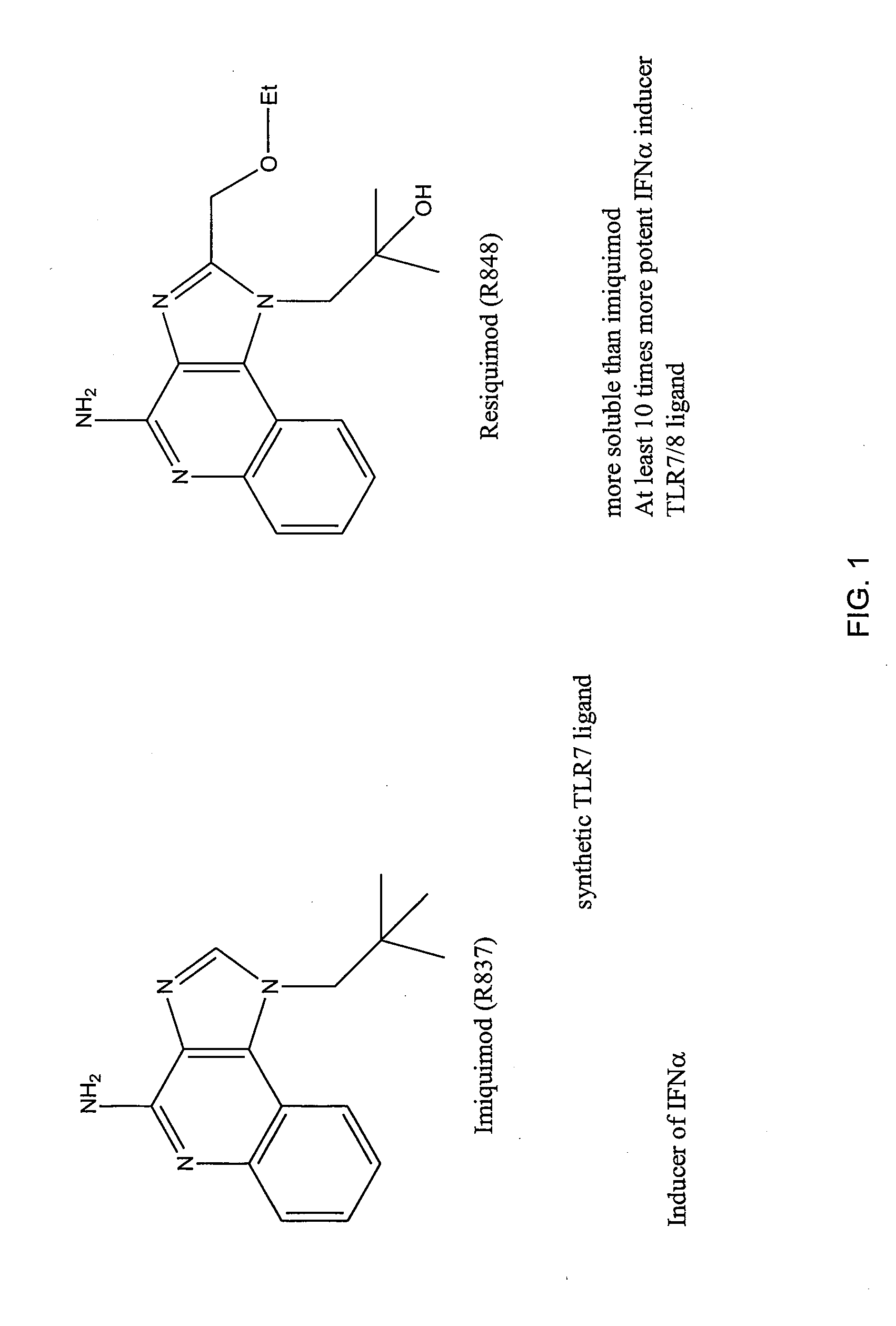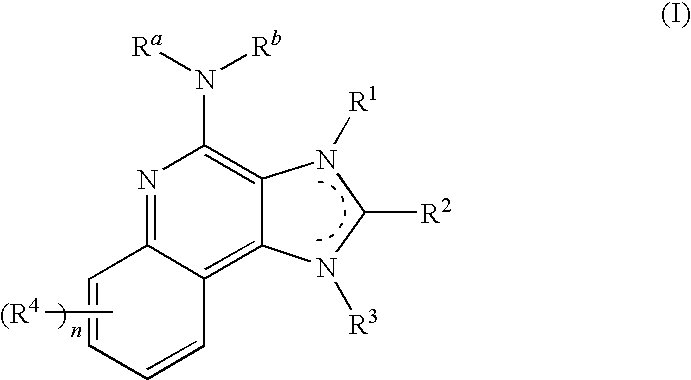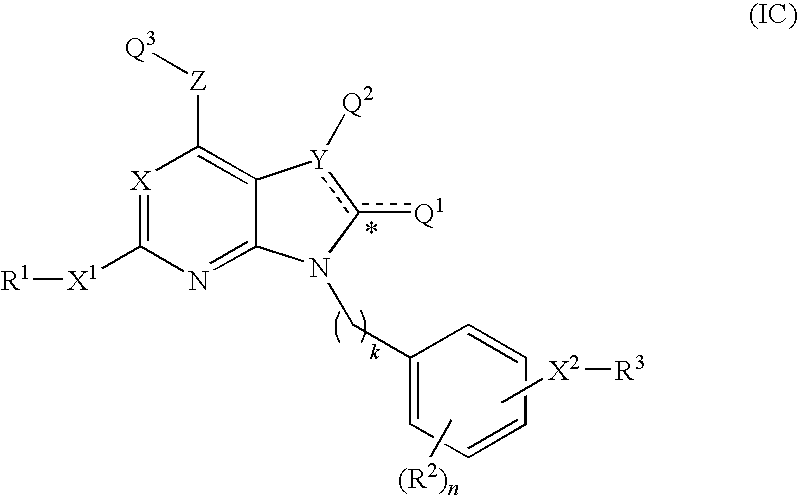Treatment of bladder diseases with a tlr7 activator
- Summary
- Abstract
- Description
- Claims
- Application Information
AI Technical Summary
Benefits of technology
Problems solved by technology
Method used
Image
Examples
example 1
[0165]The systemic delivery of TLR7 agonists is not ideal since it does not allow for the organization of the immune response in a particular part of the body. TLR7 agonists display the highest activity when delivered locally allowing the creation of a potent immune gradient. The localized delivery also reduces the risk of systemic exposure, thereby increasing the safety profile of the agonist. Bladder is an immunologically active organ, “skin turned inside out,” with TLR7 expressing dendritic and mast cells. To achieve good clinical activity for a bladder cancer patient, optimal passage of TLR7 agonists through the bladder permeability barrier is needed. Too great permeability leads to systemic side effects, while poor permeability leads to incomplete eradication. TLR7 agonist conjugates, e.g., conjugates of imiquimod, can improve the uptake of the agonist by enhancing adhesion, endosomal uptake, and / or receptor multimerization (reducing monomeric interactions), and may provide for...
PUM
| Property | Measurement | Unit |
|---|---|---|
| Composition | aaaaa | aaaaa |
| Concentration | aaaaa | aaaaa |
| Level | aaaaa | aaaaa |
Abstract
Description
Claims
Application Information
 Login to View More
Login to View More - R&D
- Intellectual Property
- Life Sciences
- Materials
- Tech Scout
- Unparalleled Data Quality
- Higher Quality Content
- 60% Fewer Hallucinations
Browse by: Latest US Patents, China's latest patents, Technical Efficacy Thesaurus, Application Domain, Technology Topic, Popular Technical Reports.
© 2025 PatSnap. All rights reserved.Legal|Privacy policy|Modern Slavery Act Transparency Statement|Sitemap|About US| Contact US: help@patsnap.com



